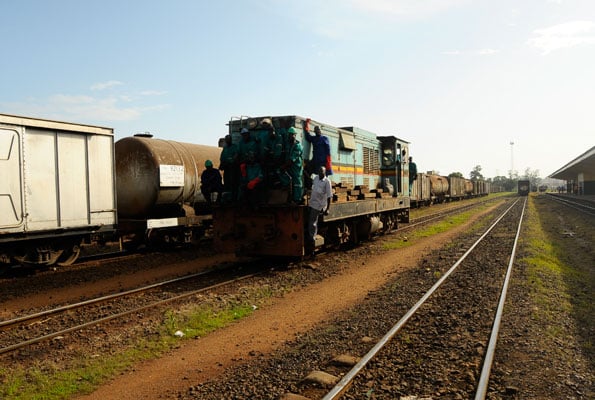Indian Coolies built our railway, why can’t our engineers now do better?

A cargo train belonging to Rift Valley Railways in Kampala, while right are people awaiting to board a passenger train in Kampala in 2011. PHOTO by Stephen Otage
What you need to know:
Rocket science? If Indian Coolies could build the 19th century Uganda Railway, wouldn’t 21st century Ugandan engineers be building the bullet train? Are we anywhere near producing the capacity that had to be imported from India more than a century ago?
“‘…as I walked along that railway line, I felt I was treading on the colonial mentality…it was a defeat against colonialism…”
These are the words of President Museveni, around 1991 or 1992, after launching a stretch of the Uganda Railway near Port Bell that had been built by Ugandan engineers.
Twenty-two years down the road, the two stories of the Katosi-Mukono road and the saga with Chinese companies over railways have attracted our ire over the immediately visible, namely high-level corruption. But as the anger rises and subsides, we need to look beyond.
What became of that capacity of 1991/92? If Indian Coolies could build the 19th century Uganda Railway, wouldn’t 21st century Ugandan engineers be building the bullet train? Are we anywhere near producing the capacity that had to be imported from India more than a century ago?
Time to rethink privatisation
The explanation for all this lies in the liberal economics we swallowed hook line and sinker, at the very time we were celebrating treading on the vestiges of colonialism. The new dogma became private sector-led growth.
The prescribers of this new paradigm were either innocently ignorant or dishonest with us. Innocently ignorant in the sense that they based their judgement on their experience back in their developed economies, where the private sector (indigenous, nationalist and age-old),is the driver of the economy. And they believed innocently, that the same would apply here.
Dishonest in the sense that they knew that the consequences of this unfettered capitalist dogma would be to ruin poor, underdeveloped economies like ours, whose private sector was far from attaining an iota of the capacity of the private sector in the developed world.
Neither would our institutions have developed capacity to handle the ‘below the line’ realities in contracts for such huge projects as railway, road or dam construction. We thus are under a double peril in the face of multinationals: weak private sector which cannot even sub-contract, and statutory institutions unable to tame the multinationals.
We need to rethink the whole thing. Since that famous dictum from President Museveni 22 years ago, with a focused manpower development programme, Uganda would have built national capacity to undertake these projects. As our planners and thinkers debate the ‘motives’ in these two procurement debacles, let’s return to the drawing board and pose such questions as, inter alia:
• What would it take us as Uganda to develop human skills essential for road or railway construction?
• When shall we have this capacity as a country?
Rocket science?
Surely, there is no rocket science involved in the technology of railway construction. Neither is it nano-technology in the case of road construction. Manpower and skill development, at different levels, is what our planners should be focusing on, as they ‘dig deeper into the motives’ in the two cases.
In the road sector, it needs to move down to the feeder roads in the country. The Public Works Department( PIIDA) did a wonderful job maintaining rural feeder roads. We need to build on the same concept and build a strong national capacity for such projects as tarmac roads and railways.
With every small project calling for foreign contractors, we run the risk of young generations growing with the belief that Ugandans have no natural aptitude to acquire such skills as road construction.
Very dangerous this one. We still have the crop of engineers who ran the ministry when during its heydays. They can spearhead the drive such institutions as Kenya’s Railway Training School, with ours upgraded to suit the times. It is not too late.




